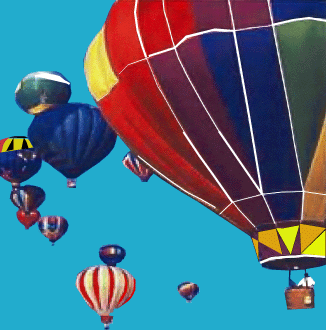

A colour image, such as the one below, is a two-dimensional array of pixels. Each pixel is a point in a 3-space, the dimensions of the space being the amounts of redness, greenness, and blueness in the pixel. These three dimensions correspond to the three kinds of light-detecting cones in our eyes. Colours other than red, green and blue are formed by levels of redness, greenness and blueness; if they are all 0% the pixel is black, if they are all 100% it is white.
Thus each pixel is a point chosen from within a cube. This is known as the colour cube, as described in the wikipedia article on color models.
The rotational symmetry group of a cube is S4. This page shows the action of the group S4 on the colour cube. The form below allows you to specify any of the group's 24 elements, and applies it to the image below. The resulting transformed image the appears to its right.
The form also allows you to specify a symmetry of the cube which is not a rotation, but a mirroring or inversion. This will result in an error message. If you want to ensure that you specify a valid rotation, then select a non-mirror from the first column of the form and check an even number of axis-inversions from the second column, or select a mirror (with ↔ in its description) from the first column and check an odd number of axis-inversions from the second column. If you really want to see what an image looks like after an operation on the colour cube which is not a rotation, use the page S4×C2 and the Colour Cube.
Other pages on colour groups
Other pages on groups.
Copyright N.S.Wedd 2008